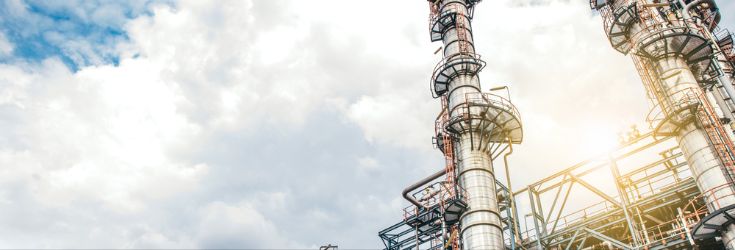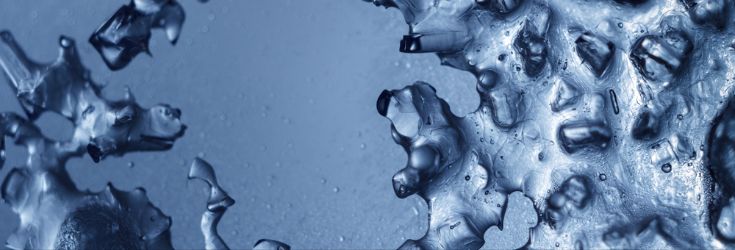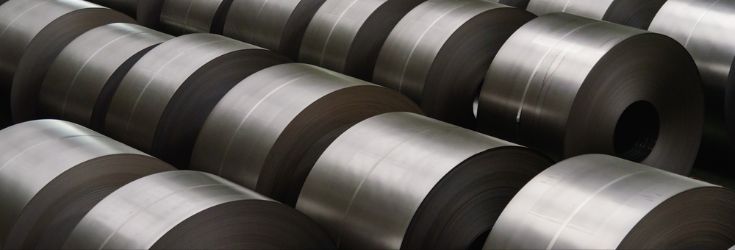Generic C276/22 VS Hastelloy® C276/C22

Hastelloy® is a trademark of Haynes International for a family of alloys which includes C276 and C22. Other mills cannot use the word “Hastelloy®” and have their own naming system. C22 is also a registered trade name, therefore other producers supply the material as alloy 22.
Universal governing systems
The universal governing system for the alloys is the Unified Numbering System (UNS) number, where UNS N10276 governs alloy C276 and UNS N06022 governs alloy 22.
Alloy C276 (UNS N10276) and alloy 22 (UNS N06022) meet all the composition requirements and characteristics as defined and specified by ASTM and ASME specifications. For UNS N10276 (C276), and UNS N06022 (22), ASTM and ASME specifications are required on all alloy stock and thus reported on all mill certificates.
The test certificates should also report relevant intergranular corrosion test results. ASTM G28A and ASTM G28B corrosion tests are qualitative tests, developed to demonstrate that the material has not been sensitised and is therefore not subject to intergranular corrosion.
General Chemistry and Key Characteristics

Here is some more detailed information about the general chemical make-up of alloys, and their most important characteristics.
Hastelloy C276/Alloy C276 – UNS N10276
Alloy | % | Ni | Cr | Mo | Fe | W | Co | C | Mn | Si | V | P | S |
C276 | Min. | balance | 14.5 | 15 | 4 | 3 | |||||||
Max. | 16.5 | 17 | 7 | 4.5 | 2.5 | 0.01 | 1 | 0.08 | 0.35 | 0.04 | 0.03 |
- Key alloying elements are chromium, molybdenum and tungsten.
- Carbon content must be maintained below 0.010% to minimise the formation of intermetallic carbides.
- Material must be fully solution annealed and have been subjected to quenching or air cooling processes to minimise the formation of intermetallic phases (mu phase), metallic carbides precipation at the grain boundaries, and the risk of sensitisation (intergranular corrosion attack).
Hastelloy C22/Alloy 22 – UNS N06022
Alloy | % | Ni | Cr | Mo | Fe | W | Co | C | Mn | Si | V | P | S |
A22 | Min. | balance | 20.0 | 12.5 | 2.5 | ||||||||
Max. | 22.5 | 14.5 | 6.0 | 3.5 | 0.015 | 0.5 | 0.08 | 0.35 | 0.02 | 0.02 |
- Key alloying elements are chromium, molybdenum and tungsten.
- Higher chromium and lower molybdenum content make the alloy more corrosion resistant in highly oxidising media than C276.
- Carbon content must be maintained below 0.015% to minimise the formation of intermetallic phases, as well as metallic carbides precipitation at the grain boundaries and the risk of sensitisation (intergranular corrosion attack).
History of the development of the “C” family of alloys

Alloys have undergone big changes over the years, and it wasn’t easy to get them to where they are today.
1930’s to 1965: Alloy C
- The first nickel–chromium–molybdenum-tungsten alloy was developed. Based on the melting technology available, alloy C still had relatively high carbon and silicon contents i.e. carbon: 0.05% maximum and silicon: 0.70% maximum.
- The alloy demonstrated good corrosion resistance characteristics for both uniform corrosion and localised corrosion.
- However, when used in the as-welded condition, alloy C was susceptible to serious intergranular corrosion attack at the HAZ (heat affected zone). This meant that, for many applications, the vessels and process equipment fabricated from alloy C had to be solution annealed to remove the detrimental HAZ.
- Moreover, in severe oxidising media, the alloy did not have enough chromium to maintain useful passive behaviour and thus, exhibited high uniform corrosion rates.
1965 to present date: Alloy C276
- With the advent of a new melting technology, AOD (argon oxygen decarburisation) / VOD (vacuum – oxygen decarburisation), allowed the alloy to be manufactured with much lower carbon and silicon levels. Carbon and silicon levels were reduced ten-fold i.e. carbon: 0.005% maximum and silicon: 0.040% maximum.
- ASTM specifies that the carbon content has to be 0.010% maximum and silicon 0.08% maximum.
- This, coupled with the development of ESR (electro slag refining) and VIM (vacuum induction melting), meant the alloy could be produced with a highly controlled chemistry and low levels of impurities and inclusions.
1970’s to present date: Alloy C4
- The omission of tungsten and a reduction in the iron content to increase thermal stability: virtually eliminating the intermetallic phases and grain boundary precipitation of the intermetallics and metallic carbides (mu phase).
1982 to present date: Alloy C22
- Alloy C22 was developed following the expiration of the patent on C276. Increased chromium with an optimised balance of chromium, molybdenum and tungsten yielded an alloy with superior corrosion resistance and thermal stability, in highly oxidizing environments.
Intergranular corrosion and thermal stability

Want to know more about inter granular corrosion and thermal processing tests? They aren’t as complicated as they might seem.
ASTM G28A and G28B Corrosion Tests
Development over the past 70 years of the “C” family of alloys has been focused on improvements in alloy metallurgy, in melting technology and in thermo-mechanical processing. ASTM G28A and G28B tests where developed later as qualitative corrosion tests, to verify that the metallurgy, melting process and thermo-mechanical processing had been completed correctly. This ensures that the material is in the fully solution-annealed condition and is not subject to intergranular corrosion resulting from the presence of intermetallic / carbide precipitates at the grain boundaries. There is no pass or fail criteria for the tests. The results are agreed between buyers and suppliers.
ASTM G28A
- Ferric sulphate and sulphuric acid boiling test.
- 50% H2SO4 + 42g/litre Fe2 (SO4)3
ASTM G28B
- Mixed acid (sulphuric acid, hydrochloric acid, ferric chloride and cupric chloride) – oxidising salt boiling test.
- 23% H2SO4 + 1% HCl + 1% FeCl3 = 1% CuCl2
Published industry accepted corrosion rates for C276 and C22/Alloy 22.
| Producers | Alloy C276 G28A
(mm per annum) | Alloy C276 G28B
(mm per annum) | Alloy 22/ C22 G28A
(mm per annum) | Alloy 22/ C22 G28B
(mm per annum) |
| Haynes International | 6.10 | 1.40 | 0.61 | 0.178 |
| Special Metals | 7.00 | 1.50 | 1.50 | 0.50 |
| ThyssenKrupp VDM | 9.00 | 1.50 | 0.90 | 0.17 |
Results based on taking the average of a minimum of 10 mill test certs/heats.
| Producers | Alloy C276 G28A
(mm per annum) | Alloy C276 G28B
(mm per annum) | Alloy 22/ C22 G28A
(mm per annum) | Alloy 22/ C22 G28B
(mm per annum) |
| Haynes International | 6.172 | Not reported | 0.807 | 0.145 |
| ATI ( Allegheny) | 5.985 | 1.330 | 0.822 | 0.151 |
| Special Metals Huntington , U.S.A | 4.315 | 0.736 | – | – |
| Special Metals Wiggin, UK | 6.835 | 0.858 | 1.135 | 0.143 |
| BGH – Germany | 4.050 | 0.780 | ||
| ThyssenKrupp VDM | – | – | 0.809 | 0.172 |
| Bohler | – | – | 0.590 | 0.094 |
| Special Metals Huntington. U.S.A. | – | – | 0.821 | 0.119 |

